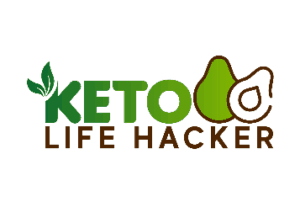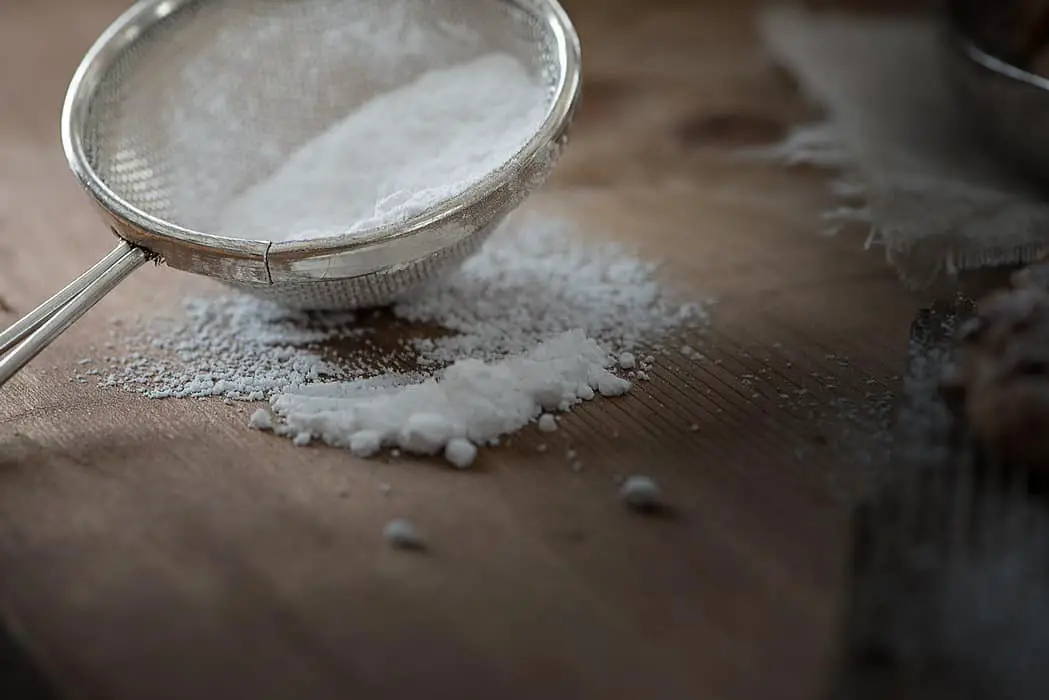One of the most difficult aspects of the keto diet that I get asked about is sugar. People, and Americans in particular, are practically addicted to sugar.
And it’s through no fault of their own, packaged products ranging from deserts to even innocuous snacks like bread and salad dressings can contain ridiculous amounts of sugar.
Forbes recently disclosed that Americans consume roughly three pounds of sugar each week!
So how do you stay away from sugar while on the keto diet?
The answer is in keto-friendly sweeteners. There are a variety of them on the market today, all with different benefits and side effects. One of the most common ones that you’ll find in packaged goods is “sucralose”.
What Is Sucralose?
Sucralose is a fairly common artificial sweetener that is used as a sugar substitute. It’s one of the most common artificial sweeteners on the market, and is most commonly used as a key ingredient in Splenda. One big difference from other sweeteners, is that it’s actually derived from sugar. But that shouldn’t scare you away immediately.
It gets its name from its base ingredient, “sucrose”, which has a slightly different chemical structure from sugar.
It’s a particularly effective sugar alternative because unlike sugar, it contains zero calories and zero carbs, all while being around six hundred times sweeter than your standard table sugar – so a little goes a long way.
Another key difference between sucralose and sugar is that nearly 85% of sucralose doesn’t actually get digested by the body after consuming it. This is because it lacks the same digestible properties as sugar, which is why it’s classified as artificial, rather than natural.
It also differentiates itself from sugar by having no implicit affects on your body’s blood glucose levels. While standard table sugars and other sweeteners traditionally spike your blood glucose levels right after being consumed, sucralose tends to have no affect at all, making it a great choice for both diabetics and those trying to keep their blood sugar low (like keto dieters).
Let’s examine this a bit further, and see how exactly it works on the keto diet.
Is Sucralose Keto-Friendly?
Because Sucralose contains zero carbohydrates, and has no effect on your blood sugar, it is definitely keto-friendly.
It is therefore a great sugar substitute to help make deserts and snacks that can curb those sugar cravings without taking you out of ketosis.
However, there is one caveat to using it on keto – and that’s paying attention to the brand, and additional nutrition facts. Even though sucralose on its own is perfectly keto-friendly, many products that use sucralose as a sweetener still contain added sugars and carbohydrates that put your ketosis at risk.
One big drawback is that the most popular product that uses it, splenda, isn’t inherently keto friendly. Splenda combines it with dextrose and maltodextrin, which both come with some problems for the keto diet.
Maltodextrin contains about four calories per gram, which is the same amount that is in table sugar. It also has a high glycemic index (GI) value, coming in between 106 and 136, which is also fairly similar to table sugar. Glycemic index is a useful way to determine how a food product or ingredient will influence your body’s blood glucose levels, which are closely related to maintaining a state of ketosis.
The dextrose that is used to make splenda is also an issue, because it comes in with a glycemic index level of a little over 90. While this isn’t the same as table sugar, it’s still high enough to potentially pull you out of ketosis if consumed in large quantities.
Sucralose on it’s own however is perfectly keto-friendly, and can be consumed in any amount without having an effect on your state of ketosis.
In my opinion, there are a few other artificial and natural sugar alternatives available that are better than this one, because they’re easier to come by and aren’t as frequently mixed with other sugar-based sweeteners like maltodextrin and dextrose, but you definitely don’t have to avoid sucralose on its own to stay on the keto diet.
From here, we’ll get into what popular food products contain it that are also keto-friendly, and will also show how it stacks up to other keto-friendly sweeteners.
What Foods Contain Sucralose?

The most common place to find sucralose is within sweetener packets at most restaurants and coffee shops. But like I just mentioned, splenda isn’t entirely keto-friendly because of the other ingredients that it comes with, so you’ll always want to keep an eye on the nutrition facts and ingredients list when deciding if a product that contains it is the right sweetener choice for you.
Aside from sugar packets, it already comes added into a lot of packaged foods and beverages, including the following:
- Chewing gum
- Diet sodas/sugar-free sodas and beverages
- Frozen deserts (sugar free ice cream, popsicles, etc)
- Protein powders and meal replacement shakes
- Sweetened condiments (flavored syrups, barbecue sauces, salad dressings, fruit spreads, and jams)
- Dairy products (sugar-free yogurts, whipped cream, etc)
- Kettecorn
- Baked goods
- Juices (Pedialyte, Powerade, Gatorade, etc)
- Gelatin products (Jell-O, sugar-free pudding, etc)
When it comes to sucralose on the keto diet, I think one of the safest ways to use it is within your own cooking. Because so many products on the market tend to contain other types of sugar, it’s easier to use when you’re in total control of your ingredients.
Next I want to lay out some important benefits and side effects of it that you should always try to keep in mind, especially when deciding on using sucralose over other keto-friendly sweetener options in your next meal or snack.
Benefits of Sucralose
On it’s own, sucralose has a lot of great health benefits as a sugar replacement for food and drinks. Some of the most useful include:
- Heat stable
It is a heat stable sweetener, meaning that it is perfect to use in canning, baking, pasteurization, aseptic processing and other food and beverage making processes that need to be done at high temperatures. This makes it one of the best sweeteners to use when trying to make keto-friendly baked goods and sweetened drinks.
- Made from sugar, without affecting glycemic index
Because it is made from sugar, it tastes a lot more like sugar than other alternative sweeteners, without any of the negative glycemic, carbohydrate, or caloric side effects of sugar. It is roughly six hundred times sweeter than sugar, which means that just a little bit of it can yield a great amount of sweet flavor in your foods and drinks.
- Doesn’t promote tooth decay
A big problem with sugar and foods high in sugar is that it rapidly promotes tooth decay. Sucralose on the other hand has no proven association with any dental problems, and studies have proven that it is not used as a food source by oral bacteria that cause tooth decay.
- Has a long shelf life
It combines the great taste of sugar with the efficient heat, liquid and storage stability that is needed for all types of foods and beverages. Unlike sugar, which goes bad easily, sucralose is stable in almost all environments, including acidic products such as carbonated drinks, sauces, jellies, milk products, etc. It has also been found to be stable in dry settings such as in powdered beverages, instant desserts, and tabletop sweeteners.
- Zero Calories
The biggest benefit of all, is that it has virtually no calories, and unlike sugar, it won’t cause any calorie-based weight gain. For this reason, it is a very helpful alternative sweetener for people that are trying to reduce their calorie intake by avoiding sugar, like us keto dieters.
- Safe for everyone
It has been determined to be safe for use by the whole family, most importantly including children, women who are pregnant or nursing and even for people even who struggle with diabetes. Health and regulatory authorities around the world have all extensively evaluated safety studies on it and in each and every case have decided that it is safe to use for people at any age, with almost every common physical condition.
Side Effects of Sucralose

Despite all of these great benefits of sucralose, it’s important to be aware of the side effects that can also come with it. According to the Food and Drug Administration (FDA), sucralose is perfectly healthy, but that doesn’t necessarily mean that it doesn’t come with its own side effects.
Some of the most common side effects that you should be aware of when considering it include:
- Potentially dangerous chemical reactions when baking with certain foods
While it is generally heat stable, there are some chemicals that cannot be mixed, particularly if you’re using this sweetener in the form of Splenda.
- Digestion
It takes a decent amount of time for sucralose to build up within your digestive system, so if you’ve decided to spring for a quick meal or treat that contains it, I wouldn’t get too worried. However there have been some mixed reviews of using it in the long term, with results showing some pretty serious digestion problems. Studies have connected heavy use to indigestion, gas, bloating, and diarrhea.
Splenda in particular has also been known to have laxative-like effects because of the way it interacts with the bacteria of your digestive system. So if you have particularly sensitive digestion to begin with, I’d exercise some caution before overdoing it with Splenda.
- Headaches
A 2008 study revealed that some artificial sweeteners, including splenda, might be responsible for increased frequency of migraines and headaches. However there are still more studies being done to prove this, so if you do start experiencing a headache, don’t be quick to rule out other potential triggers.
- Disrupts your intestinal flora
Similarly to how it affects your digestion, sucralose also has been known to disrupt the flora within your intestines. A recent study determined that using it decreased the amount of good bacteria in your digestive tract, while increasing the bad bacteria. You can learn more about the implications of this disruption here.
- Allergies
Like most products on the market, some people are bound to be allergic to them, and sucralose is definitely no exception. Some reported allergic reactions associated to consuming it include: acne, achy joints, nausea, tinnitus, dizziness, rashes or hives, shortness of breath, and and a runny nose with sneezing.
Sucralose Alternatives on Keto
Stevia
This sweetener is derived from a natural plant source and also comes with zero calories. One benefit is that thee are virtually recognized negative health effects of eating stevia, and it has not been proven to result in spikes in blood sugar levels. In some cases, stevia has actually been linked to reducing blood sugar levels. Stevia isn’t as sweet as sucralose though, coming it at two hundred to four hundred times sweeter than sugar.
Erythritol
Erythritol is characterized as a sugar alcohol that does have some calories, but only about 0.24 calories per gram, and still tastes almost identical to sugar. When we consume erythritol, most of it ends up being absorbed right into the bloodstream and excreted without actually being digested, so it usually doesn’t carry the same side effects as table sugar.
Monk Fruit
Monk fruit is a great sugar substitute, with only one teaspoon containing about 0.4 grams of carbohydrates. It’s one of my personal favorite keto-friendly sweeteners, because it’s extremely potent in concentrate form, and can be used in any types of baking and cooking because it’s heat stable. The extracts and powders used as sweeteners are derived from the monk fruit plant (colloquially known as luo han guo), which makes it a perfectly natural way to sweeten up your food.
Aspartame
Aspartame is also known as a very popular sweetener, but it probably comes with the most negative side effects out all of the ones that are keto-friendly. Aspartame is typically used in a lot of popular products like diet sodas, sugar-free ice cream, and gum. However some of the most serious side effects of using aspartame include: seizures, headaches, depression, dizziness, and even weight gain.
Xylitol
Xylitol is a decent choice when it comes to artificial sweeteners. Like sucralose, xylitol has has little to no effect on blood glucose levels, and comes with very few side effects. One of the more noticeable drawbacks is that it isn’t has heat stable as most keto-friendly sweeteners, which makes it more challenging to make baked goods with it.
Final Thoughts
I’d say that sucralose is absolutely a viable and effective sugar substitute for those trying to stick to the keto diet.
It’s a keto-friendly option because it has no calories or carbs, and it’s concentrated sweetness makes a little go a long way when it comes to cooking with it.
However it does come with some serious side effects depending on any pre-existing digestion issues or allergies, and should still, like sugar, be used in moderation if possible. Fortunately, there are a variety of keto-friendly sweeteners on the market that also add great flavor without taking you out of ketosis.
Do you have any great keto recipes with sucralose? Leave a comment below, I’d love to check them out or even feature them in our next blog post!

